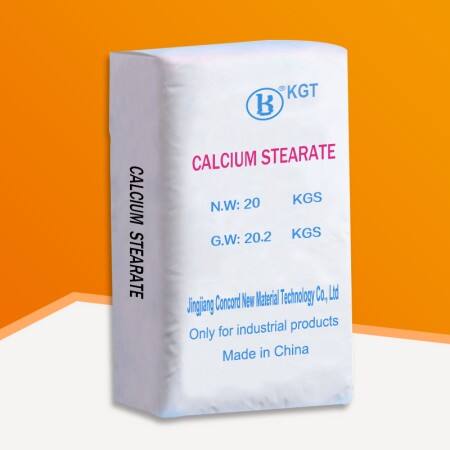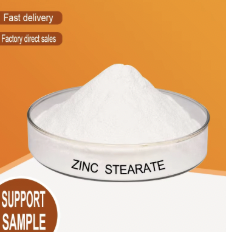Understanding the Unique Properties of Metal Stearates
In the world of industrial additives and lubricants, metal stearates play a crucial role in various manufacturing processes and end products. Among these versatile compounds, calcium and zinc stearates stand out as two of the most widely used variants, each bringing distinct characteristics and benefits to different stearate applications. These white, powdery substances might look similar at first glance, but their chemical properties and performance characteristics create significant differences in how they function across various industries.
The fundamental distinction between calcium and zinc stearates lies in their molecular structure and the way they interact with other materials. These differences directly influence their behavior in various applications, from plastics and rubber to pharmaceuticals and cosmetics. Understanding these unique properties is essential for manufacturers and formulators to make informed decisions about which metal stearate best suits their specific needs.
Chemical Composition and Physical Properties
Molecular Structure and Formation
Calcium stearate is formed when stearic acid reacts with calcium hydroxide, resulting in a compound with two stearate ions bonded to one calcium ion. This structure gives calcium stearate its characteristic stability and heat resistance. Zinc stearate, on the other hand, is produced through the reaction of zinc oxide with stearic acid, creating a molecule where two stearate ions are coordinated with a single zinc ion.
The molecular weight and atomic properties of calcium versus zinc create subtle but important differences in how these stearates behave. Calcium stearate typically exhibits better thermal stability, while zinc stearate offers superior lubricity and release properties in various stearate applications.
Physical Characteristics and Behavior
Both stearates appear as fine, white powders, but their particle size distribution and surface area can vary significantly. Calcium stearate tends to have a slightly higher melting point and better heat stability, making it ideal for high-temperature applications. Zinc stearate, with its lower melting point, provides excellent flow properties and is often preferred in applications requiring smooth processing.
The density and bulk properties of these compounds also differ, affecting their dispersibility and incorporation into various matrices. These characteristics become particularly important when considering specific stearate applications in different manufacturing processes.

Industrial Applications and Performance
Plastics and Polymer Processing
In the plastics industry, both calcium and zinc stearates serve as essential processing aids, but their roles often differ. Calcium stearate excels as a stabilizer and acid scavenger in PVC formulations, helping prevent degradation during processing. It also provides good anti-blocking properties in polyolefins.
Zinc stearate, meanwhile, is particularly valued for its superior release properties and lubrication in injection molding and extrusion processes. Its lower melting point makes it especially effective in applications requiring smooth material flow and easy mold release.
Rubber and Elastomer Manufacturing
The rubber industry utilizes both stearates differently based on their unique properties. Calcium stearate is often preferred in rubber compounds where heat stability is crucial, such as in tire manufacturing. Its ability to maintain performance at higher temperatures makes it invaluable in these applications.
Zinc stearate finds extensive use in rubber processing as a mold release agent and processing aid. Its excellent lubricating properties help reduce friction during mixing and molding operations, leading to improved surface finish and easier processing.
Specialized Industry Applications
Pharmaceutical and Personal Care Products
In pharmaceutical applications, calcium stearate is widely used as a tablet lubricant and flow aid due to its excellent compatibility with active ingredients and its stability. Its non-toxic nature and resistance to degradation make it particularly suitable for pharmaceutical stearate applications.
Zinc stearate is more commonly found in cosmetic formulations, where its smooth texture and water-repellent properties make it ideal for powder products like makeup and baby powder. Its ability to improve slip characteristics and provide a silky feel to products has made it a staple in personal care formulations.
Construction and Building Materials
The construction industry employs both stearates in different capacities. Calcium stearate is frequently used in concrete and cement applications as a water-repellent additive and processing aid. Its stability in alkaline environments makes it particularly suitable for these materials.
Zinc stearate finds application in powder coatings and paint formulations, where its hydrophobic properties and excellent flow characteristics contribute to superior surface finish and weather resistance. It also serves as an effective anti-caking agent in various building material formulations.
Environmental and Safety Considerations
Environmental Impact
When comparing environmental impacts, calcium stearate generally shows better biodegradability and lower environmental persistence. This characteristic has led to its increased adoption in eco-conscious applications where environmental sustainability is a priority.
Zinc stearate, while also considered relatively environmentally friendly, may require more careful consideration in certain applications due to potential zinc accumulation in ecosystems. However, both compounds are generally regarded as environmentally acceptable when used appropriately.
Safety and Regulatory Compliance
Both calcium and zinc stearates have excellent safety profiles and are approved for use in various applications by regulatory bodies worldwide. Calcium stearate holds particular advantages in food-contact and pharmaceutical applications due to its strong safety record and regulatory acceptance.
The regulatory framework governing these stearate applications continues to evolve, with both compounds maintaining their status as preferred choices in their respective applications while meeting increasingly stringent safety and environmental standards.
Frequently Asked Questions
What are the main differences between calcium and zinc stearates in terms of heat stability?
Calcium stearate typically exhibits higher heat stability and a higher melting point compared to zinc stearate. This makes calcium stearate more suitable for high-temperature applications, while zinc stearate is often preferred in processes requiring lower processing temperatures and better flow characteristics.
Can calcium and zinc stearates be used interchangeably in most applications?
While there is some overlap in their applications, calcium and zinc stearates are not typically interchangeable due to their distinct properties. Each offers specific advantages in different applications - calcium stearate excels in stability and heat resistance, while zinc stearate provides superior lubricity and release properties.
Which stearate is more suitable for food-contact applications?
Calcium stearate is generally preferred for food-contact applications due to its excellent safety profile and widespread regulatory approval. It has a long history of safe use in food packaging and pharmaceutical applications, making it the preferred choice for these sensitive applications.

